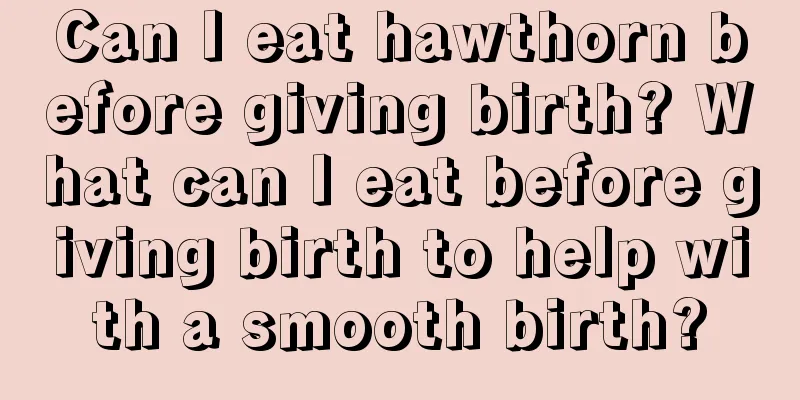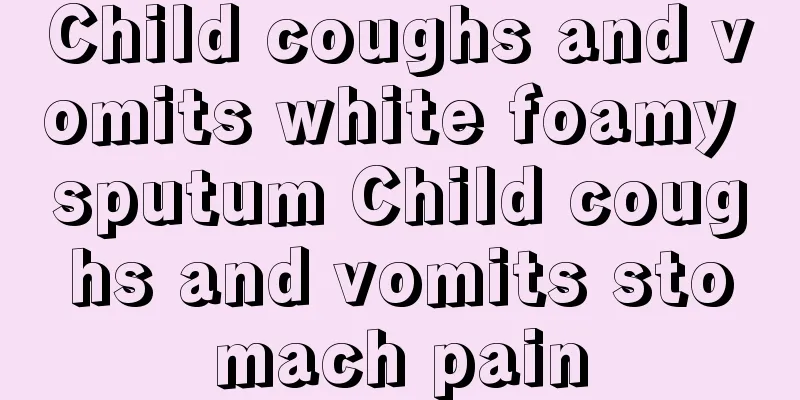What are the white spots on my baby's gums?

|
What are the white spots on the baby's gums? Many careful mothers have found that there are white spots on the baby's gums. What is the situation? Let's introduce to you what are the things on the baby's gums and how to take care of them correctly. What are the white spots on the baby's gums?When the baby was two months old, two small white spots were found on the gums, one on each side. These should be horse teeth. Some newborns or babies 1 to 2 months after birth have white spherical particles the size of millet or rice growing on the gums in their mouths. The number varies and they look very much like small teeth. In fact, these are not teeth, but during the development of teeth, the oral mucosal epithelial cells proliferate and thicken to form a plate, and bend into a horseshoe shape in the form of the jawbone gums. This is the dental plate. After the formation of the dental plate, the deep cells accelerate proliferation and form 20 deciduous tooth germs at a certain position. This is the beginning of the development of deciduous teeth. Now, the gums are white, hard, and seem to be a little swollen. This should be that the child is about to grow teeth. The teeth have made the gums white. Suggestions: If you are worried, you can take it to the hospital's dental department for a check-up. This should be a normal phenomenon. What are the white spots on the baby's gums?If these small white spots feel hard, look like millet or rice grains, and are white and bead-like, then the possibility is even greater. This is the excess epithelium of the dental plate keratinized into a mass when the tooth germ is formed. Some of it is absorbed, and some is free under the oral mucosa. Generally, it does not affect sucking and can fall off automatically without treatment. Do not prick it with a needle to prevent injury and infection. Some newborns or infants 1-2 months after birth will have white spherical particles the size of millet or rice on the gum edge of the gums or on both sides of the middle seam of the upper palate. The number of these particles ranges from a few to more than 10. They look very much like small teeth, and people commonly call them "horse teeth". In fact, "horse teeth" are neither real teeth nor pathological, but dental plates formed by epithelial cells during embryonic development. Initially, the dental plates adhere to the oral epithelium. When the deciduous tooth germ develops to a certain point, the dental plates break. Part of the broken dental plates are absorbed, and the unabsorbed part gradually proliferates and keratinizes, forming epithelial beads of small white spherical particles on the gums, namely "horse teeth". "Horse teeth" generally have no symptoms and have no effect on the development and health of the oral and maxillofacial region, so no treatment is required. After a few weeks, with the friction of eating and sucking, "horse teeth" will disappear on their own. For newborn "horse teeth", do not pick them with a needle or rub them with a towel or coarse cloth. This is very dangerous. Because the oral mucosa of newborns is very delicate and rich in blood vessels, if you pick or rub it randomly, it will damage the oral mucosa and increase the child's pain. What's more terrible is that the damage to the oral mucosa is conducive to the invasion of bacteria, which can cause inflammation of the oral mucosa and even lead to sepsis and tetanus. Therefore, even if the "milk teeth" affect the baby's feeding or the child cries violently, you should not pick or rub it randomly, but go to the hospital to ask a dentist for treatment. How to fix baby's gumsHow to properly care for baby's deciduous teeth Children's deciduous teeth usually last for 6 to 10 years, which is the peak period of their growth and development. If the teeth are not in good condition, it will affect the digestion and absorption of nutrients by the children, hinder their healthy growth, and also affect their appearance and pronunciation. Therefore, it is necessary to pay attention to the daily care of the deciduous teeth of the children. Specifically, you can pay attention to the following issues: Keep your mouth clean Although young children do not need to brush their teeth, it is best to let them drink some boiled water after each meal and before going to bed to clean out any remaining food in the mouth and protect their deciduous teeth. Ensure adequate nutrition Give children complementary foods and adequate nutrition in time to ensure the normal structure and shape of their teeth and improve their resistance to dental diseases. For example, more sun exposure and timely vitamin D supplementation can help calcium absorption in the body; meat, eggs, milk, and fish are rich in calcium and phosphorus, which can promote the development and calcification of children's teeth and reduce the possibility of tooth lesions; lack of vitamin C will affect the health of periodontal tissues, so children should eat more vegetables and fruits, the fiber in which can also clean teeth. Develop the correct feeding posture When infants are feeding, their jaws may protrude or retract due to incorrect feeding posture or improper bottle position. Infants who frequently suck on empty pacifiers will have their upper palate arched, causing the teeth that will erupt later to protrude forward. These tooth and jaw deformities will not only affect the appearance of the infant, but also affect the development of the infant's chewing function. Therefore, when feeding, the baby should adopt a semi-recumbent position, with the bottle at a 90-degree angle to the baby's lips. The nipple should not press on the upper and lower lips, and the baby should not develop the habit of sucking on an empty nipple. |
>>: Can pregnant women eat black chicken? It has high nutritional value
Recommend
Do premature babies need to drink premature milk powder? What kind of milk is best for premature babies?
Premature babies are special babies who need more...
Can a laundry bag clean clothes? What is the function of a laundry bag?
Nowadays, many people use laundry bags to wash cl...
What is the inulin in Qiyun pregnant milk powder? When is the best time to drink Wyeth Qiyun milk powder?
Many mothers choose Qiyun milk powder for pregnan...
How about Ariel laundry detergent? Which series of Ariel laundry detergent is the best?
Now, most people use Ariel laundry detergent for ...
Can pregnant women eat ugly oranges? Can pregnant women eat ugly oranges?
Ugly orange is a special variety of orange. Altho...
How long after opening does Zhenshiming Eyewash become unusable? Can children use Zhenshiming Eyewash?
Zhenshiming eyewash is still very popular among t...
How to tell if your baby has bow legs? How to do a physical examination for your baby at home?
The baby's growth stage requires our constant...
When should I start drinking the tea for smooth delivery? Can the tea help with smooth delivery?
Natural childbirth is what almost all women hope ...
How to fix the problem of scented candles not burning around? Why are scented candles not fragrant?
Scented candles are a very common product on the ...
When is the painless delivery injection given? Where is the painless delivery injection given?
The pain index of childbirth is indescribable. Wi...
How to choose a nickname for a newborn? What are the techniques for choosing a name?
Have you ever seen newborn babies being named? To...
The breastfeeding journey of a new dairy cow mother
As a young "little cow mom" who is only...
Can babies wear socks to sleep in winter?
Winter is very cold, and even mothers have to kee...
How to prepare Gerber Rice Cereal? How to prepare Gerber Rice Cereal in proportions
Many mothers are worried about domestic rice nood...
What nutrients should pregnant women supplement during pregnancy? 9 essential nutrients during pregnancy
For expectant mothers who have endured morning si...









